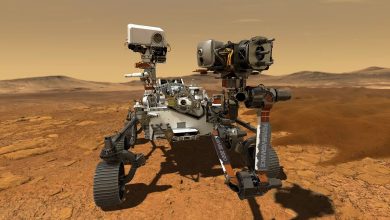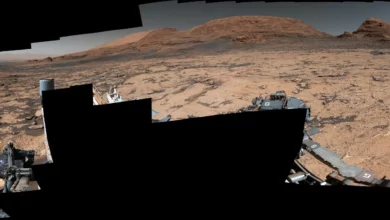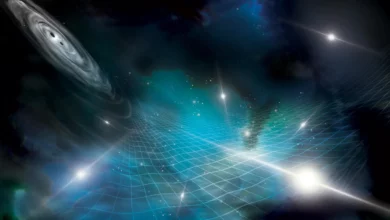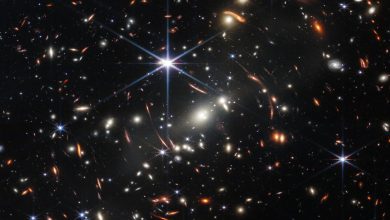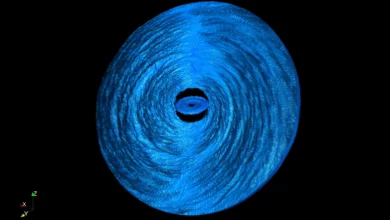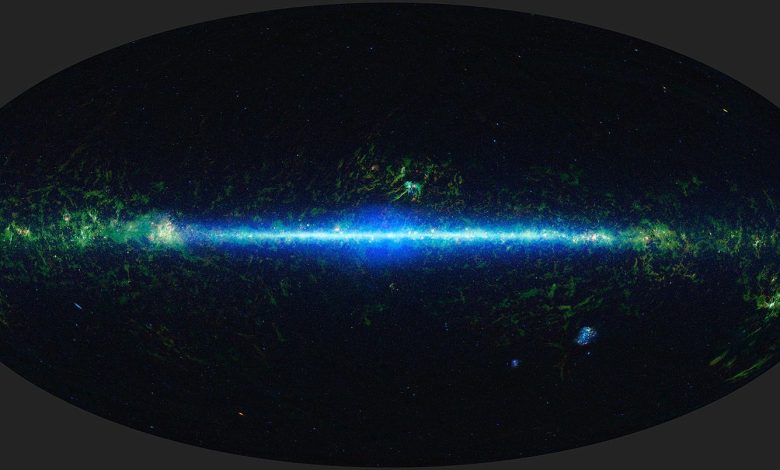
Lead Image: This mosaic shows the entire sky imaged by the Wide-field Infrared Survey Explorer (WISE). Infrared light refers to wavelengths that are longer than those visible to the human eye. Many cosmic objects radiate infrared, including gas and dust clouds where stars form, and brown dwarfs. Credit: NASA/JPL-Caltech/UCLA
Pictures of the sky can reveal the grandeur of the cosmos, but movies can bring them to life. Movies from NASA’s NEOWISE space telescope are unveiling motion and change across the sky.
NASA’s Near-Earth Object Wide Field Infrared Survey Explorer, or NEOWISE, spacecraft completes one trip halfway around the Sun every six months, taking images in all directions. Once stitched together, those images form an “all-sky” map showing the location and brightness of hundreds of millions of objects. Using 18 all-sky maps produced by the spacecraft (with the 19th and 20th to be released in March 2023), astronomers have constructed what is essentially a time-lapse movie of the sky, revealing changes that span a decade.
Launched in December 2009 as the Wide-Field Infrared Survey Explorer, or WISE, the space telescope was originally developed to survey the sky in infrared, detecting asteroids, stars, and some of the faintest galaxies in space. It did so successfully until completing its primary mission in February 2011. In December 2013, observations resumed when the telescope was taken out of hibernation and re-purposed for the NEOWISE project as an instrument to study near-Earth objects, or NEOs, as well as more distant asteroids and comets.
Each all-sky map is a tremendously valuable resource for astronomers by itself. However, when viewed in sequence as a time-lapse, they serve as an even more powerful tool for attempting to unlock the secrets of the universe. Comparing the maps can reveal distant objects that have changed position or brightness over time. This is known as time-domain astronomy.
“If you go outside and look at the night sky, it might seem like nothing ever changes, but that’s not the case,” said Amy Mainzer, principal investigator for NEOWISE at the University of Arizona in Tucson. “Stars are flaring and exploding. Asteroids are whizzing by. Black holes are tearing stars apart. The universe is a really busy, active place.”
NEOWISE was originally a data processing project to retrieve asteroid detections and characteristics from WISE – an observatory launched in 2009 and tasked with scanning the entire sky to find and study objects outside our solar system. Cryogenically cooled detectors in the spacecraft were sensitive to infrared light.
New time-lapse movies from NASA’s NEOWISE mission give astronomers the opportunity to see objects, like stars and black holes, as they move and change over time. The videos include previously hidden brown dwarfs, a feeding black hole, a dying star, a star-forming region, and a brightening star. They combine more than 10 years of NEOWISE observations and 18 all-sky images, enabling a long-term analysis and a deeper understanding of the universe. Credit: NASA/JPL-Caltech; WISE-NEOWISE movies compiled by Dan Caselden
Infrared light is not visible to the human eye. It is radiated by a plethora of cosmic objects, including cool, nearby stars and some of the most luminous galaxies in the universe. The WISE mission ended in 2011 after the onboard coolant – needed for some infrared observations – ran out, but the spacecraft and some of its infrared detectors were still functional. So in 2013, NASA repurposed it to track asteroids and other near-Earth objects, or NEOs. Both the mission and the spacecraft received a new name: NEOWISE.
Growing Wiser
Despite the mission shift, the infrared telescope has continued to scan the sky every six months. Astronomers have continued to use the data to study objects outside of our solar system.
For example, in 2020, researchers released the second iteration of a project called CatWISE: a catalog of objects from 12 NEOWISE all-sky maps. Astronomers use the catalog to study brown dwarfs, a population of objects found throughout the galaxy and lurking in the darkness close to our Sun. Although brown dwarfs form like stars, they don’t accumulate enough mass to kick-start fusion, the process that causes stars to shine.
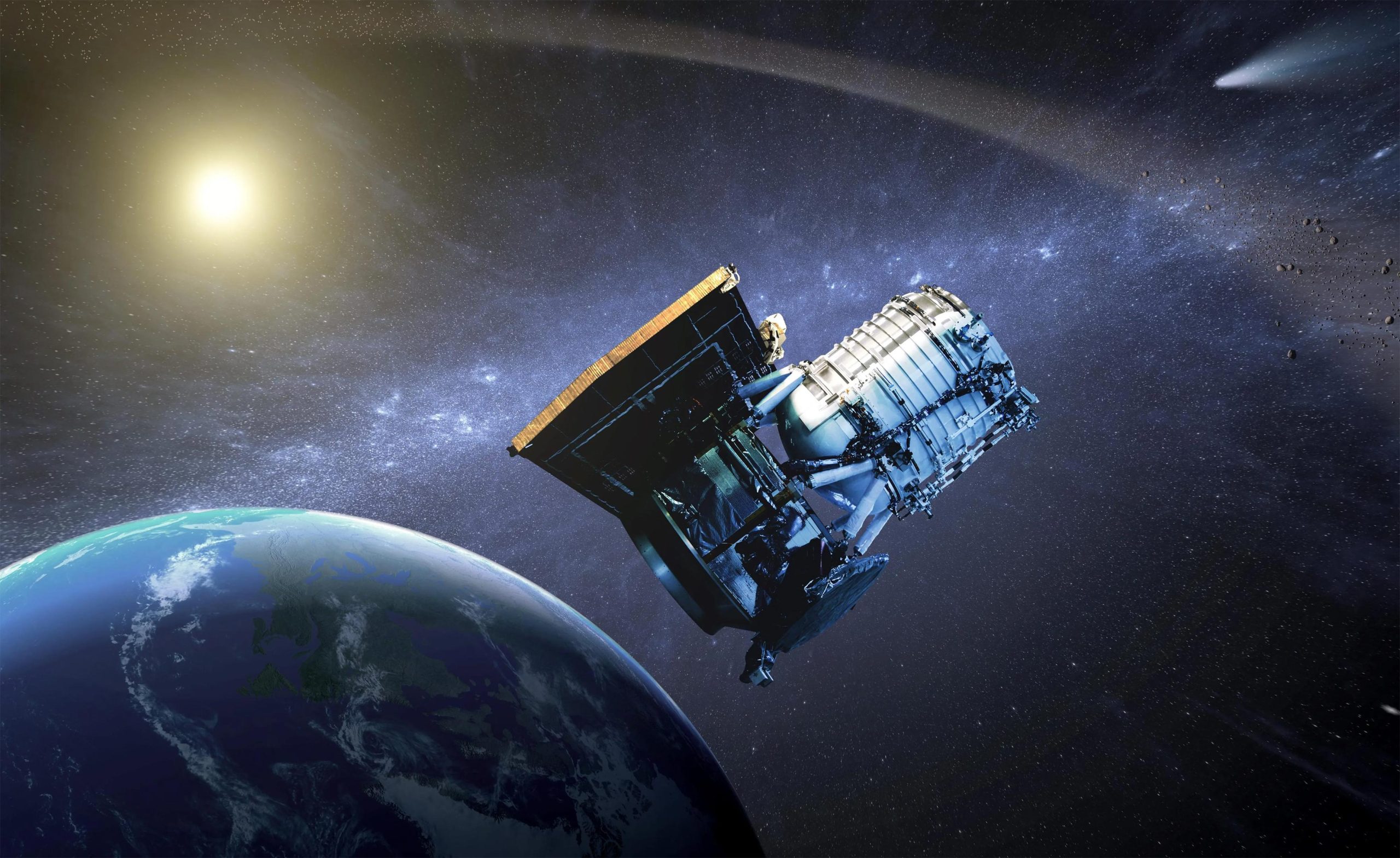
Because of their close proximity to Earth, nearby brown dwarfs appear to move faster across the sky compared to more distant stars that are moving at the same speed. Therefore, one way to identify brown dwarfs amid the billions of objects in the catalog is to look for objects that move relatively quickly. A complementary project to CatWISE called Backyard Worlds: Planet 9 invites citizen scientists to sift through NEOWISE data for moving objects that computer searches might have missed.
With the original two WISE all-sky maps, astronomers discovered about 200 brown dwarfs within just 65 light-years of our Sun. Additional maps subsequently revealed another 60 and doubled the number of known Y-dwarfs, the coldest brown dwarfs. Compared to warmer brown dwarfs, Y-dwarfs may have a stranger story to tell in terms of how they formed and when. These discoveries help illuminate the menagerie of objects in our solar neighborhood. A more complete count of brown dwarfs close to the Sun also informs scientists about how efficient star formation is in our galaxy and how early it began.
Watching the sky change over more than a decade has also contributed to studies of how stars form. NEOWISE can gaze into the dusty blankets swaddling protostars, or balls of hot gas that are well on their way to becoming stars. Over the course of years, protostars flicker and flare as they accumulate more mass from the dust clouds that surround them. Scientists are conducting long-term monitoring of almost 1,000 protostars with NEOWISE to gain insights into the early stages of star formation.
Our understanding of black holes. has also improved thanks to data from NEOWISE. Millions of supermassive black holes were discovered at the centers of distant galaxies in the original WISE survey. In a recent study, astronomers used NEOWISE data and a technique called echo mapping to measure the size of disks of hot, glowing gas surrounding distant black holes, which are too small and too distant for any telescope to resolve.
“We never anticipated that the spacecraft would be operating this long, and I don’t think we could have anticipated the science we’d be able to do with this much data,” said Peter Eisenhardt, an astronomer at NASA’s Jet Propulsion Laboratory and WISE project scientist.
More About the Mission
NASA’s Jet Propulsion Laboratory (JPL) in Pasadena, California, manages and operates the NEOWISE mission for NASA’s Planetary Defense Coordination Office within the Science Mission Directorate in Washington. The principal investigator, Amy Mainzer, is at the University of Arizona. The Space Dynamics Laboratory in Logan, Utah, built the science instrument. Ball Aerospace & Technologies Corp. of Boulder, Colorado, built the spacecraft. Science data processing takes place at IPAC at Caltech in Pasadena. Caltech manages JPL for NASA.
JPL managed and operated WISE for NASA’s Science Mission Directorate. Edward Wright at the University of California, Los Angeles (UCLA) was the principal investigator. The mission was selected competitively under NASA’s Explorers Program managed by the agency’s Goddard Space Flight Center in Greenbelt, Maryland.

